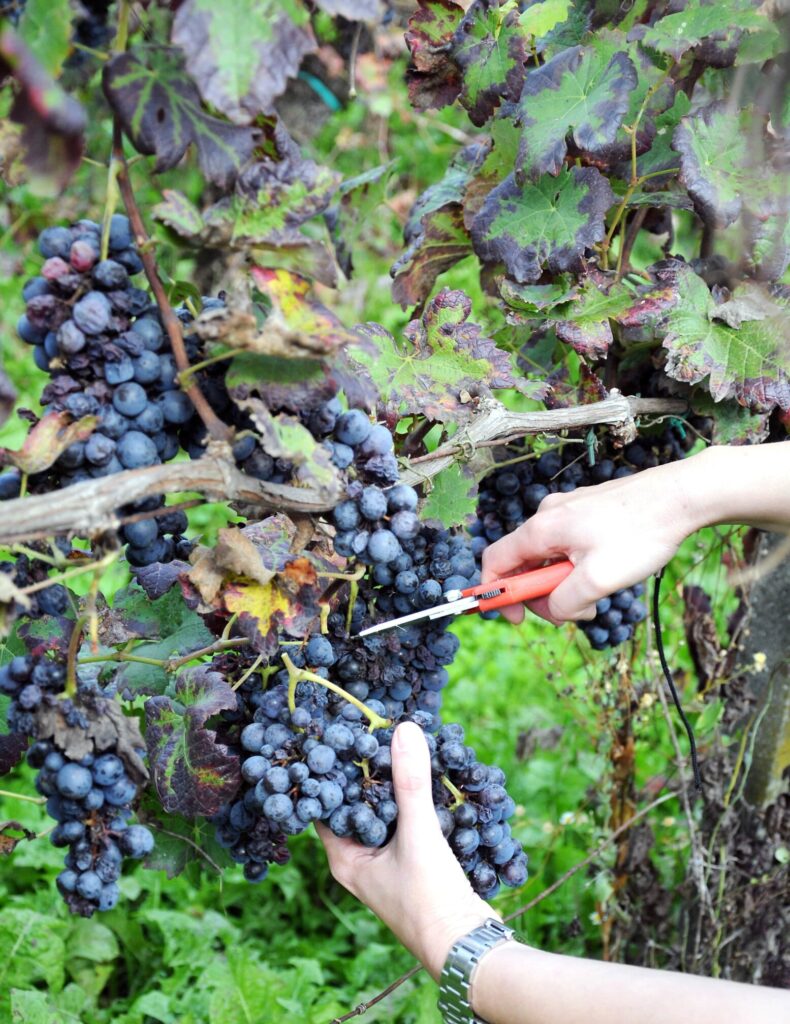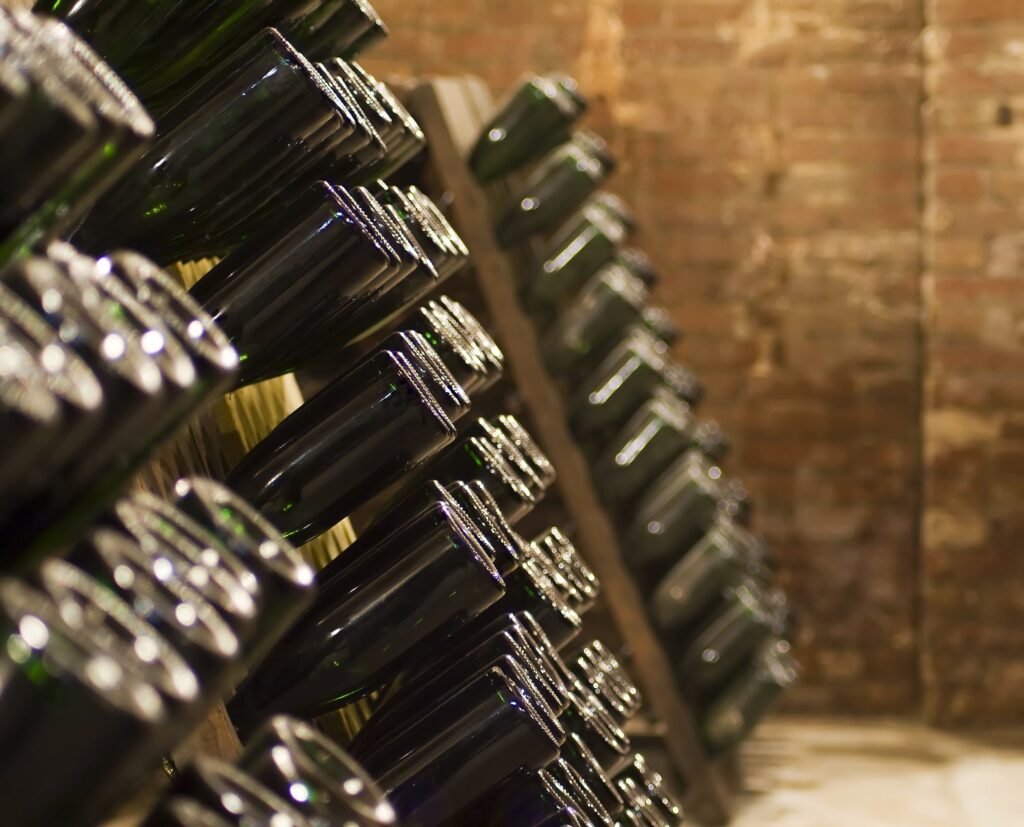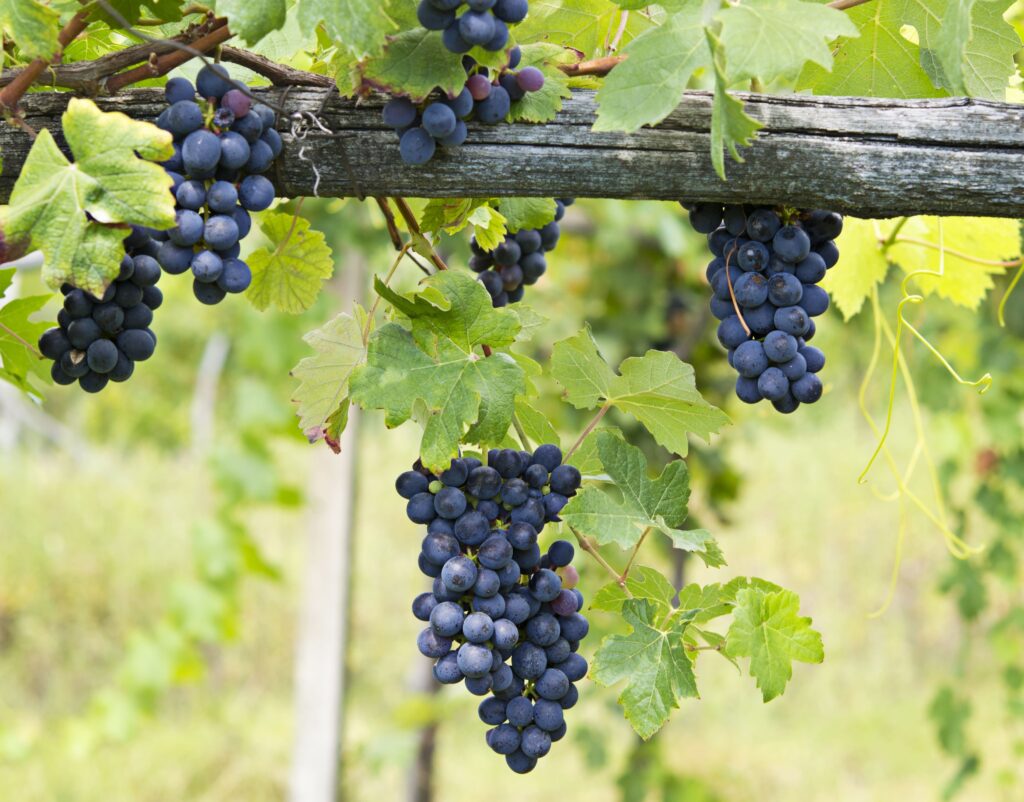- Home
- Barbera: a wine of excellence from Piedmont
Barbera: a wine of excellence from Piedmont
An analysis about Barbera wine, its origins and its features
In this article, we, from Cantine Povero, would like to tell the story of one of the most famous and appreciated wines from Piedmont: the Barbera. We would like to describe the features and the peculiarities and deepen the way of production. We hope that after have read this article, you will appreciate more the features of the Barbera and we hope that you will appreciate the Barbera proposals available in our online shop.
Enjoy your reading!
Barbera wine
Barbera is an Italian black grape, especially popular in Piedmont and Lombardy, but it is also present in some regions of Central Italy.
After Sangiovese and Montepulciano is one of the most cultivated grape varieties in Italy. In Piedmont the most famous areas of production are Asti and Alba, where the Barbera is available with the following two denominations Barbera d’Asti DOCG and Barbera d’Alba DOC, also available in the superior versions. In Piedmont, we can also find the Barbera under the denominations: Barbera del Monferrato Superiore and Piemonte Barbera.
Short story of the Barbera wine
The first written documents about the Barbera grape dated back the end of XVIII century, but there are also more ancient documents, dated back the XV century, where it is described, a wine named grisa or grisola, that probably was the Barbera. Probably the Barbera came from Monferrato and it is known from the XIII century. There are also other theories saying that the Barbera came from Lombardy, in particular from the Oltrepò Pavese area. With the Italian immigration, the Barbera spread in different countries all over the world, for example California and Argentina.
The geographical areas for the Barbera production
The Barbera d’Asti is produced in the provinces of Asti and Alessandria. The wine is a full-bodied wine, with a good acidity and, in the aged versions, it has also a good structure and a great complexity. The color is a purple red and, according to the aging, it has also garnet shades. The flavor is floral and fruity. In the mouth is dry and harmonic. The Barbera d’Alba is produced in Cuneo province. These wines are more smooth and less austere compared to the Barbera d’Asti, but still with a good structure. The color is intense ruby red, at the nose there are fruity and spice notes. In the mouth is intense and full bodied. Read Also “Red Wines from Monferrato: Barbea, Dolcetto e Grignolino
The features of Barbera wine
The wine, produced with Barbera grapes, is normally characterized by an intense ruby red, with shades that range from violet to garnet red, depending on the aging. The nose is characterized by intense little red and black fruit aromas, like cherry, blueberry, raspberry and blackberry. If the wine is aged in wood, it can also have toasted and spicy notes like vanilla. Especially in the last years, the wines produced from Barbera grapes, have a good alcohol content. The Barbera wine has normally a good acidity and non-aggressive tannins. Depending on the vinification process, it can have a good aging potential and a good structure.
The Barbera ways of production
The Barbera wine can be vinified in different ways, but normally the producers aim to reduce the acidity and the astringency, typical of this grape. The superior versions have a longer aging and they reach a higher alcohol degree. It is possible to have different versions:- still: fermentation in thermo controlled stainless steel tanks, malolactic fermentation, aging in stainless steel tanks for some months
- still: fermentation in thermo controlled stainless steel tanks, malolactic fermentation, aging in wood (big oak barrels or barriques)
- vivace: fermentation in thermo controlled stainless steel tanks, malolactic fermentation, refermentation in autoclave
- some producers prefer longer aging in big oak barrels
- some producers prefer shorter aging in new barriques
Differences between aging in wood and in stainless steel
Because the stainless steel is a neutral material, there are no interchange with the wine, so the wine isn’t enriched by new aromas. The stainless steel is easier to clean and to sterilize, furthermore it is also easier to control the temperature. The stainless steel is also able to bear the high level of pressure. On the contrary, using the wood there is a constant interchange of aromas and tannins between the surface of the oak barrel and the wine. This interchange depends on the wood used to build the barrel, on the age of the barrel, on the dimensions of the barrel and on the toasting process.Thanks to its porosity the wood allows the interchange of the oxygen from the outside to the inside of the barrel. More the barrel is young, more the oxygenation is higher; more the barrel is small, more is higher the interchange with the outside, so there are more effects on the wine.
The grapes used for the production of Barbera
The Barbera grape is a black medium-late ripening grape. The leaf has a medium size, with pentagonal shape and with light green color. The grape is intense blue color with a medium size and with a neutral taste. It is characterized by high acidity. The bunch has a compact pyramidal shape and medium size. This grape has a good yield per hectare, this is why the pruning is necessary.
Normally the Barbera is harvested between the end of September and the beginning of October, but sometimes it is left on the plant for longer time, so that it will reach a higher sugar content. The Barbera can adapt to different pedoclimatic conditions, this is why it can also reach the maturation in vineyards that haven’t a very good exposition. It can also adapt to different soils, but it prefers the clay and limestone soils. As for more other grapes, also for the Barbera there are different clones.
The Barbera proposals from Cantine Povero
Contrada Maestra Barbera d’Asti
The Contrada Maestra Barbera d’ Asti is a fresh Barbera, with intense notes of cherry and blueberry. It ages only in stainless steel tanks and ages only in steel, releasing an excellent juiciness accompanied by a good acidic shoulder, typical of the grape.
Dianae Barbera d’Asti
After the hand picking of the grapes, the wine is vinified without adding any sulfites. Like the Contrada Maestra, also the Barbera d’Asti Dianae, ages in stainless steel tanks, to preserve the freshness and the red fruit scents typical of the grape. Compared to the Contrada Maestra, the Dianae is more structured and complex.
Maridà Barbera d’Asti DOCG
With a red ruby color and spicy scents, releases blackcurrant, cocoa and vanilla aromas, thanks to the long aging in our cellar. The Maridà Barbera d’Asti DOCG is an elegant Barbera, like the legendary character, from which it takes the name.

Garavagna Barbera d’Alba DOC
Garavagna Barbera d’Alba DOC is a harmonic, mature and structured Barbera, that allows the grape to express all its potential in terms of complexity and evolution. It is aged for 18 months in 2500 l oak barrels of Slavonian oak. It has a wide bouquet with berry jam, ripe cherry, ginger rose, jammy raspberry, cassis, soil, bark, cinnamon, incense and a light vanilla scent.
Pensè Piemonte DOC Barbera
Pensè Piemonte DOC is a meditation Barbera, which is sipped slowly appreciating the enviable balance and harmony even with a high alcohol content. After long waits in the vineyard and in the cellar, it has a slightly less evident acidity than the other versions of Barbera, and notes of ripe berries, cherries in spirit, green tea, spices, and licorice. The taste is warm, soft, and velvety
Pairing, service and the best ways to serve the Barbera wine
If the Barbera is drunk young, it is possible to pair it with all meal; if it is drunk after a period of aging, it goes well with game, meat and mature cheese. The Barbera d’Asti vivace is served fresh and it goes well with first courses and cold cuts. On the contrary the Barbera d’Asti, the Barbera del Monferrato and the Barbera d’Alba go well with grilled meat, roasted meat, game and spicy cheese. If the Barbera is young, it goes well with appetizer typical of the Piedmont cuisine like cold cuts, with first courses, like lasagna or with meat courses like bollito. If the Barbera is aged, it goes well with first courses like truffle risotto and with second courses like braised and stewed meat.
Depending on the aging of the wine, we suggest to open the bottle at least one hour before taste it (if you are tasting a young Barbera, that has no aging, it is not necessary to open it earlier). Depending on the style of the wine, the serving temperature ranges from 16 to 20 °C (if it is the vivace version, we suggest to serve it fresher) and we suggest to use medium- big glasses.







